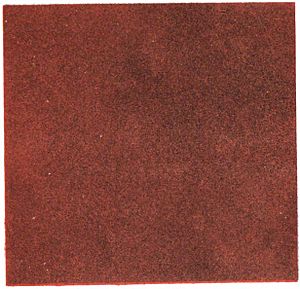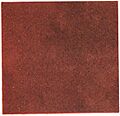Seneca Quarry facts for kids
Quick facts for kids |
|
|
Seneca Quarry
|
|

Completed in 1868, the Seneca stone cutting mill cut the stone for hundreds of buildings in the Baltimore and Washington area before the Seneca quarry closed in 1901
|
|
| Location | Tschiffeley Mill Road., Seneca, Maryland |
|---|---|
| Area | 91.2 acres (36.9 ha) |
| Built | c. 1780 |
| NRHP reference No. | 73000224 |
| Added to NRHP | April 24, 1973 |
The Seneca Quarry is a special historic place in Seneca, Montgomery County, Maryland. It sits right next to the Chesapeake and Ohio Canal and the Potomac River. This quarry was a very important source of stone for many years.
The quarry provided red sandstone for two major canals along the Potomac River. It supplied stone for the Patowmack Canal, which opened in 1802. It also provided stone for the C&O Canal, including many of its locks and the famous Seneca Aqueduct, built between 1828 and 1833.
Contents
What is Seneca Red Sandstone?
The special red sandstone found here is also known as "redstone." It formed a very long time ago, between 230 and 210 million years ago! Its rusty red color comes from iron oxide inside the stone. People loved this stone because it was easy to cut, very strong, and had a bright, beautiful color.
When the stone was first taken from the quarry for buildings like the Smithsonian Castle, it was described as "lilac grey." But over time, as it was exposed to the weather, it turned its well-known rusty red color.
How the Quarry Became Important
Many quarries operated along the Potomac River near Seneca Creek. The Chesapeake and Ohio Canal was key to the Seneca Quarry's success. It allowed the heavy sandstone to be easily moved to big cities like Washington, D.C.
The Peter family, who owned the quarry from 1781 to 1866, helped it become very successful. John P.C. Peter, a great-grandson of Martha Washington, made the quarry a big business. He won a contract to supply red sandstone for the Smithsonian Castle, which was built from 1847 to 1855. John Peter also built a stonecutting mill that used power from the nearby canal.
Famous Buildings Made with Seneca Stone
Seneca Quarry supplied stone for hundreds of buildings in the Washington, D.C. area. Some of these include:
- Houses in areas like Dupont Circle and Adams Morgan.
- Luther Place Memorial Church, built in 1873.
- The D.C. Jail in the 1870s.
Another nearby quarry, called the Government Quarry, also provided stone for important projects. This included the Union Arch Bridge (also known as the "Cabin John Bridge") and the McClellan Gate at Arlington National Cemetery.
The Quarry's Later Years
After the American Civil War, a company called the Seneca Sandstone Company bought the quarry in 1866. They made the stonecutting mill bigger in 1868. However, the company faced financial problems and went out of business in 1876. The quarry then closed for seven years.
In 1883, the Potomac Red Sandstone Company reopened the quarry. But it only operated until 1889. That year, the Great Flood of 1889 damaged the C&O Canal, making it unusable for two years.
A new owner, George Mann, bought the quarry in 1891 and ran it for the next ten years. By 1901, the quarry stopped working. The quality of the stone was getting worse, and the style of Victorian architecture that used this type of stone was no longer popular.
The Seneca Schoolhouse
The Seneca Schoolhouse is a small, one-room school built in 1866. It was made from the same red sandstone from the quarry. This school was built for the children of the stone cutters who worked at the quarry. Today, the schoolhouse is located in Poolesville, Maryland. It offers tours to schoolchildren, letting them experience what a school day was like in 1880.
Visiting Seneca Quarry Today
Today, the Seneca Quarry area is covered with trees like sycamores and tulip poplars, and thick bushes. It can be hard to explore during most of the year. The best time to visit is in winter when the plants are less dense.
You can still see the ruins of the stonecutting mill where Seneca Creek meets the C&O Canal. The quarry master's house has been restored and is located within Seneca Creek State Park. The quarry itself, the Seneca Aqueduct, and the quarry cemetery are all part of the Chesapeake and Ohio Canal National Historical Park. The quarry is also part of the larger Seneca Historic District.
Seneca Quarry was added to the National Register of Historic Places in 1973, recognizing its importance in history.
Images for kids
- Seneca Quarry, Montgomery County, Inventory No.: M: 17-52, including photo in 1997, at Maryland Historical Trust website
- WAMU 88.5 FM Metro Connection, "From Stone to Bright Red Structure: A Tour of the Seneca Quarry," March 30, 2012.








